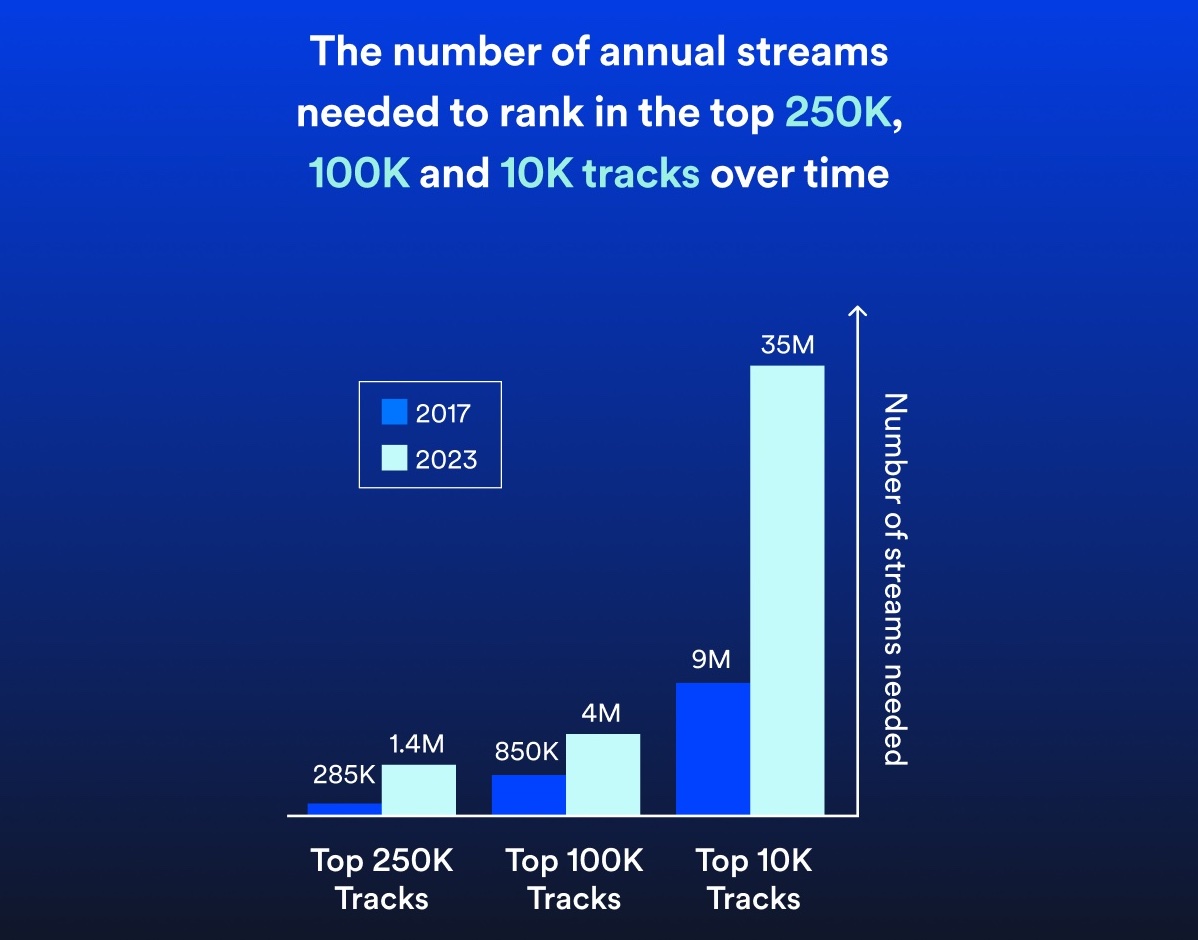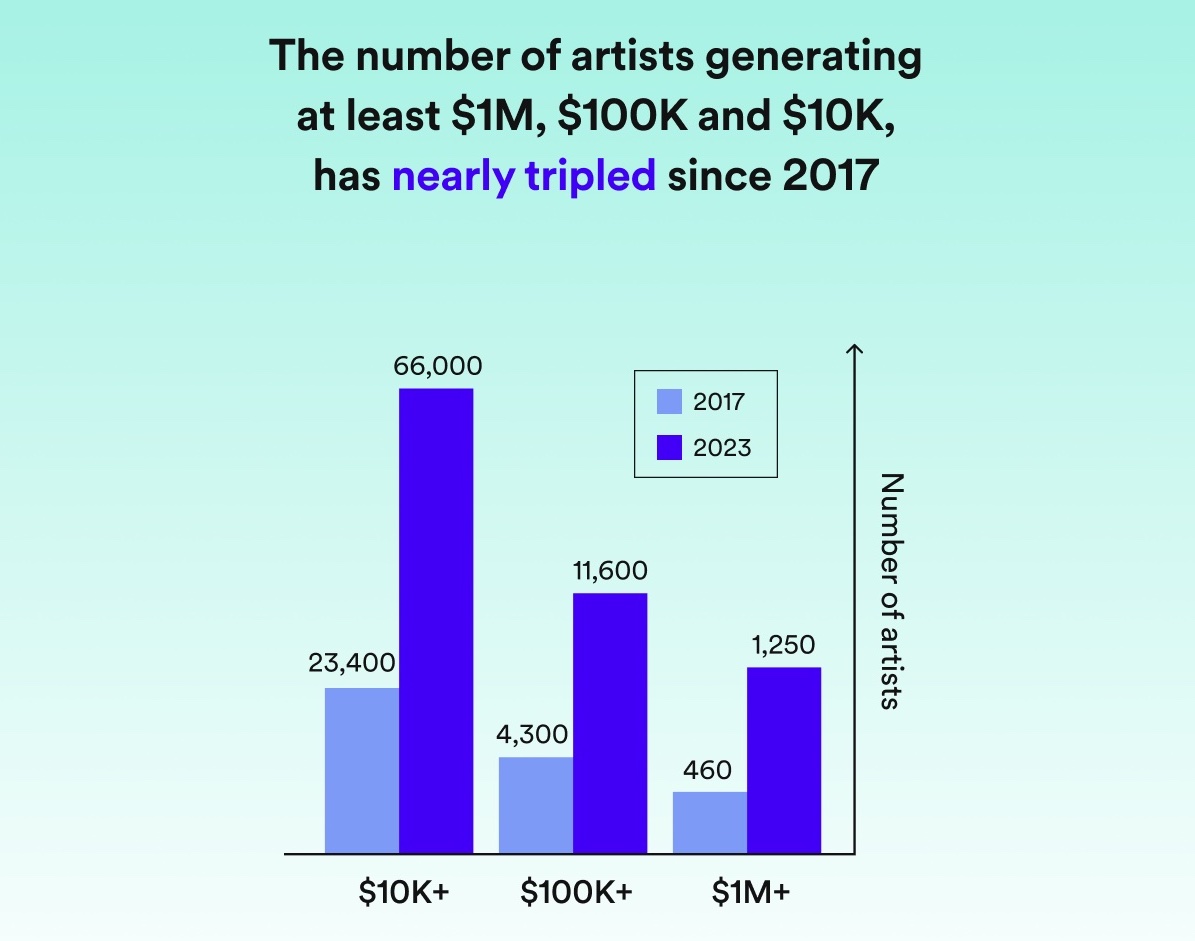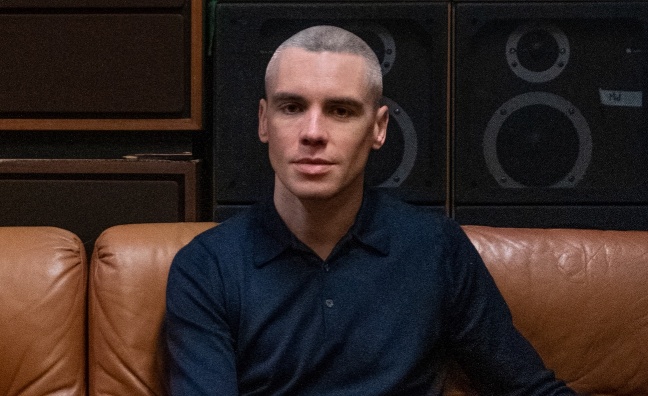Spotify has unveiled its annual Loud & Clear report into the economics of music streaming.
The fourth edition of Loud & Clear continues to provide a resource for artists on the platform and improve transparency for the streaming sector.
Ahead of today’s report, Spotify had revealed its record £9 billion payout to the music industry in 2023, with almost half of that going to indies – a first for the independent sector.
The Loud & Clear portal has all kinds of information about earnings and the remuneration for different areas of the industry. Spotify had 236 million subscribers in its latest results.
Here, Bryan Johnson, Spotify head of artists & industry partnerships, takes a closer look at the streaming giant’s data for 2023…
Given that record figure of $9 billion paid out in 2023, how significant is Spotify as a music industry partner?
“Well, I think streaming is driving the whole industry to be bigger. Spotify is a huge part of that. We set the record for the highest annual payment to the industry by any single retailer last year with over $9 billion paid out. That figure has nearly tripled over the past six years, and it represents a massive part of that $48 billion that Spotify has paid out since founding. So we're continuing to grow.
“Loud & Clear is there as our annual report, it's the fourth year we've done it. The idea is to show how we are impacting artists at all stages. The other thing we announced was around what indies had generated on Spotify, which was nearly $4.5 billion. I feel like this is a very empowering time for artists. There are way more options for how to release music, there are way more choices on how to build a career. It could be someone going with an independent deal. It could be someone with a major label deal, it could be someone going with a distributor deal. So there are options and choices in front of people. Each has their own benefits, but it's fantastic to see us empowering artists at every single level.”
How important is the UK market for Spotify?
“The UK is a top music market globally for the recorded industry. The UK, the London office, is a key market for Spotify, and it's certainly somewhere that has incredible focus. Going back to the independent story that we touched on, it's inspiring and empowering to see independent artists have that success. We just saw Raye clean up at the BRITs, which was great to see. The UK is very much an important market for Spotify.”
Are there challenges for Spotify in some parts of the world in terms of increased regulation?
“I think there's been a very important conversation happening over the past few years, particularly for the artists. Artists [are able] to dig into how streaming economics work, how music monetisation works. People read about record payouts, people question where it's going. Something we’re trying to do with Loud & Clear is give that clarity and transparency to artists, to their teams and to the broader public about how Spotify works, how we fit into the streaming world.”

Loud & Clear shows that, in 2023, 50,000 artists generated at least $16,500 from Spotify, and likely $65,000 from recorded music overall. How is the platform helping more artists to make a living?
“One of the meaningful parts of publishing this data each and every year is to watch the scale of artists’ earnings transform over time. So this new data shows that the number of artists generating at least $10,000 in a year, or $100,000 in a year, or $1 million in a year, has nearly tripled since 2017. These are all first-time milestones for Spotify royalties, and it's pretty incredible to see these being set each and every year at every single level. We know we're empowering artists at every single level.”
Not all artists can have hits on Spotify, how do they make a living on the platform?
“There are different ways, but something we focus on with Loud & Clear this year is what we're calling the unexpected millionaires. So when you think about the sorts of artists that are making big amounts of money on Spotify, it's a logical thing to think about those that have a song that might go viral, or someone in the Top 50 charts, or maybe it's someone who's been nominated for awards or they’re getting heavy airplay on the radio, and are featured across some of our top playlists. They're the kinds of things that come to mind.
“But there are actually over 1,000 artists that generated more than $1 million dollars on Spotify last year who didn't have a single song chart on Spotify’s Global Top 50 [in fact, 80% of these Spotify millionaires didn’t breach the Top 50]. I wish you could see the list of artists clearing a million, this is not something we publish on the site. But they’re not names that you might expect. It's a testament to how streaming and Spotify has broadened the gateway into music, and how people can release music now, get it out there and find an audience. There's a much broader pool of artists coming through.”
There used to be a perception that maybe independent artists didn't get the same kind of playlisting profile as major labels or big artists. But does the global reach of Spotify mean that alternative, experimental and independent music can thrive?
“Streaming has levelled the playing field for how an artist can get their music into the world. Over time the cost of creating, producing and releasing music has become more affordable, so independent artists can now access the same global audience and resources as the superstars. Spotify For Artists is our hub where we have all of our creative tools and marketing tools for artists to access. Everyone has access to those tools, whether it's DIY artists coming from through a distributor, an established indie artist who's got a few records out, or a major label artist who’s got 10 records out over decades' worth of a career. People can access the same tools and resources to reach audiences.
“Today, artists have more choices than ever. We’re seeing that in the data, we know last year was a record year for indies. It's just seeing that in practice, seeing artists like Raye cleaning up at the BRITs, seeing artists like Alvvays earning a Grammy nomination, and so many others selling out tours. Arctic Monkeys [the biggest domestic act in UK Spotify Wrapped in 2023] are headlining festivals. The independent sector is thriving, and I was super-happy to be able to showcase that on Loud & Clear this year.”
Streaming has levelled the playing field for how an artist can get their music into the world
Bryan Johnson
Spotify altered its remuneration model at the start of the year. How does that help artists?
“We introduced a number of measures at the end of last year, really to empower those emerging and professional artists and to help cut back on artificial streaming. It's worth acknowledging that the increase in opportunity and choices has created a busier marketplace with more artists than ever before able to make music in an accessible and increasingly affordable way. And there are more artists than ever trying to turn that into a career in music.
“We looked at our data, and we would say there's around 225,000 emerging and professional artists. These are the ones most dependent on streaming for their livelihoods. We hear about 10 million artists being on Spotify, but 10 million is just the people who have uploaded at least one track. It's highly likely that not every single one of those people is approaching it as a profession. When we were digging into the data, we found that more than half the people who uploaded to Spotify created less than a full album's worth of content, which in a lot of cases can be a fairly useful indicator of someone's professional intent. So by showing that stat we're trying to demystify that 10 million [figure], we want to provide context for those emerging and professional artists. So we don't see this as a scary place where there’s so much competition. We go into detail on how we get to that 225,000 [figure] in Loud & Clear as well.”
Do you feel that Loud & Clear is leading the way in terms of streaming transparency? And Spotify already has public data such as stream counts…
“Yes, by culture, Spotify has always been transparent and provided clarity, and I think the stream counts are a really good example of that. With Loud & Clear, this was another example of us coming to the table, trying to give that clarity and trying to give that transparency to this important conversation that's happening about monetisation. Artists are reading or hearing about these record profits, record growth year-on-year, quarter-on-quarter. It was a very important question about who's making that money.
“This is the fourth year we've done Loud & Clear. I think it's definitely helped. We’re coming to the table with this information to have a constructive conversation. We would love other platforms and services to do it as well. I think the more information we get out there, the clearer picture we have and the more we can drive the industry forward in a way that's beneficial to us.”

How are the songwriters and publishing sector benefiting from Spotify’s growth?
“Every single part of the industry is finding success. It's not just artists through the recorded rights. It's songwriters through the publishing rights as well. Over the last two years, we've paid out nearly $4 billion to publishing rights-holders who represent songwriters. So there’s more and more money to be shared. One thing we do on Loud & Clear, just in terms of the educational level, we show how we pay these royalties. We show how it filters down to artists or songwriters based on their individual deals with their rights-holders, So there's a couple of videos on there that are useful for those communities.”
Are there any particular UK partnerships at the moment that are key for Spotify?
“We work closely with all our partners, so rights-holders, managers, organisations. On an artist level, we're constantly having people here, we're going out to see people all the time, updating them, learning, listening, getting an understanding as to what's going on in the industry. And it's moving fast. You know, a lot of the things we're building, a lot of the things that come through Spotify For Artists, are based on feedback. It's super-important that we're out there listening to what people need and want in 2024 because we're definitely in a changing environment. People are releasing music in different ways. So it's something where we work closely and we value all these partnerships we have.”
Spotify now has so much audio content, not just music but also audiobooks and podcasts. Could this potentially dilute music within the overall Spotify offering?
“Going back, the Spotify experience was primarily music. We introduced podcasts as another vertical, and now audiobooks as a third vertical. We see these as complementary to each other.”
You’re also introducing music videos, does that alter the model for artists at all?
“Video is another tool for the artists to express themselves. I think for a fan, it's another way they can get into an artist as well. For the artists, it's another way that they can express themselves. We've actually had video on the platform for a few years now. Canvas and Clips is another evolution of that. The full-length promo video is something we're testing, it's not something we rolled out fully. That's just something we're testing right now and gathering feedback on that.”
Finally, is there any word on HD audio or spatial audio coming to Spotify, following the announcement a few years ago of Spotify HiFi?
“It's something that has been spoken about for a while across the broader industry. I'd certainly love to see it happening soon.”
PHOTO: Jamie Cameron









